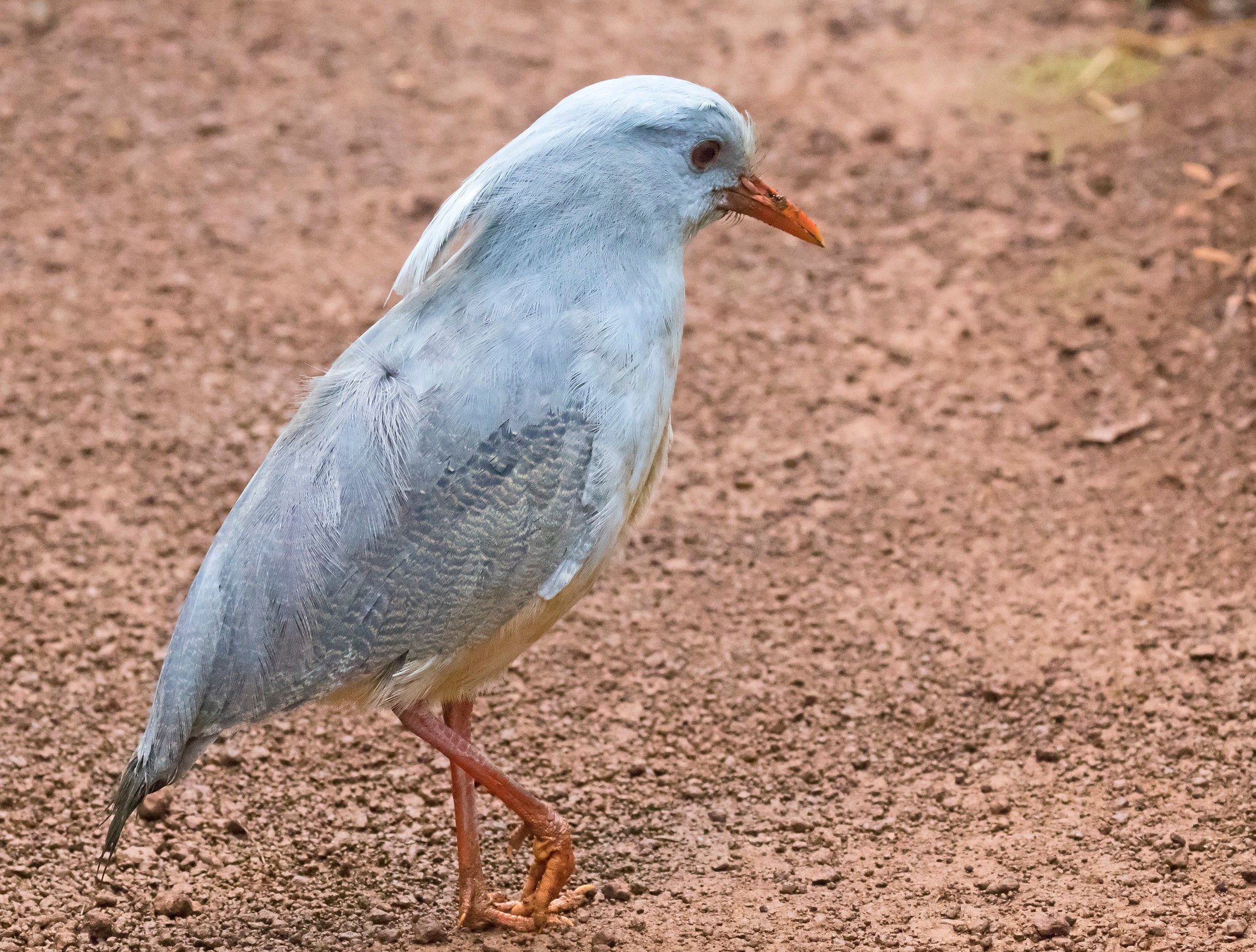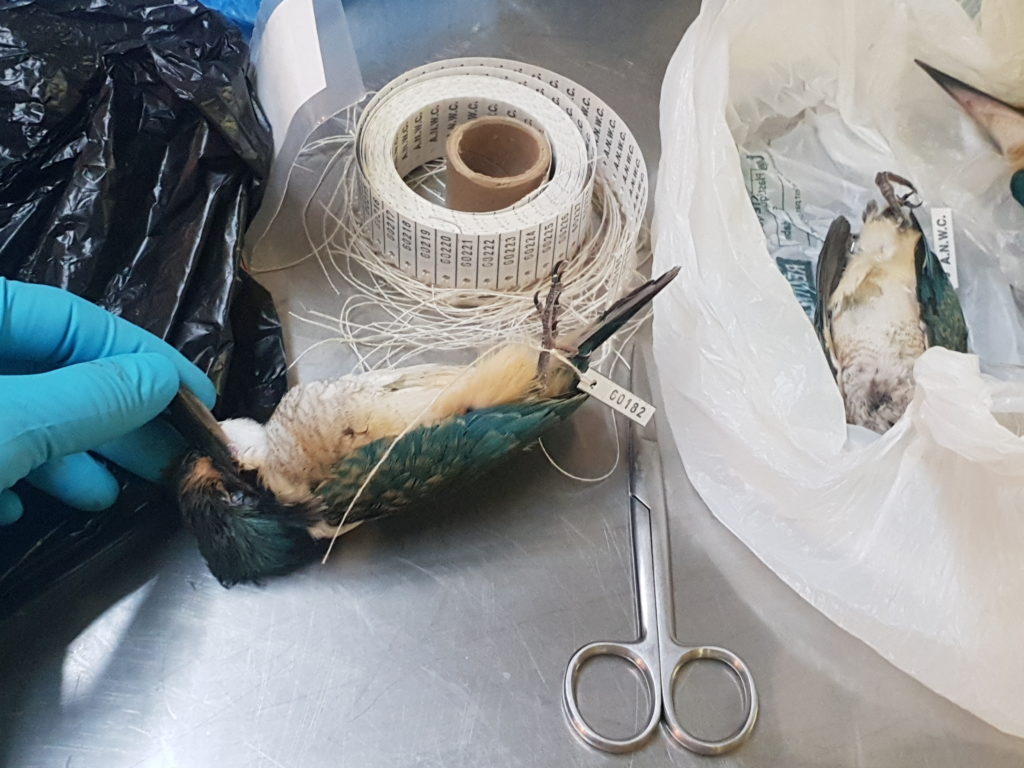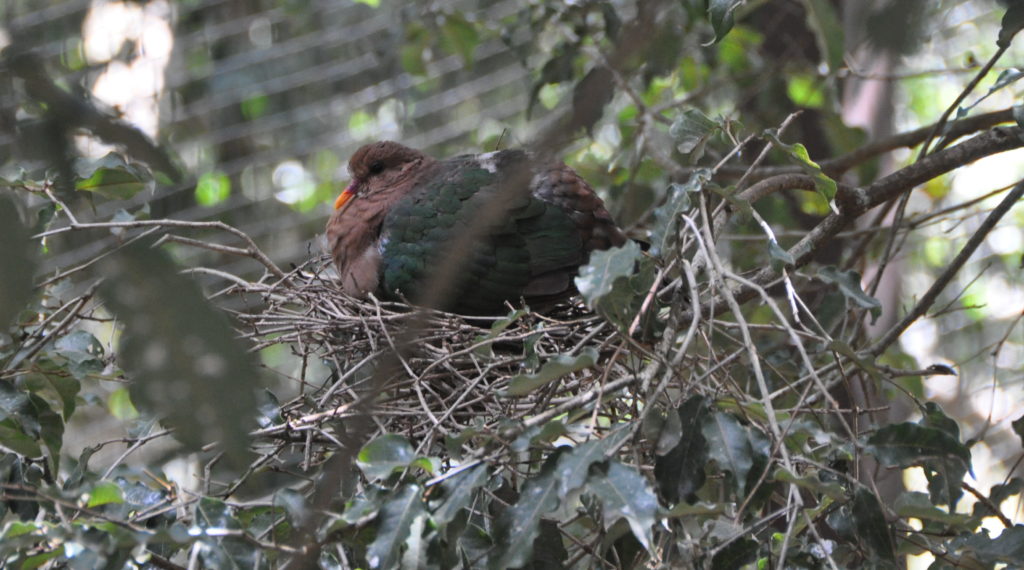 The iconic Kagu. Image: Flickr/George Chapman
The iconic Kagu. Image: Flickr/George ChapmanWhy birds?
The fauna and flora of New Guinea and the Pacific islands are critical to understanding the evolution of species in Australia and the wider Pacific. Millions of years ago the Australian continent became isolated. New Guinea is a much younger land mass. And the Pacific islands have diverse geological histories. Combine all these factors and the result is a region with an exceptional number of endemic species, that is, species found nowhere else on Earth. The Australian National Wildlife Collection includes several biological collections. They are repositories of specimens used in biodiversity research. The Collection is just one of four major national collections based in Canberra. Its focus is terrestrial vertebrates – birds, mammals, amphibians, and reptiles. Collection director Dr Leo Joseph explains that the specimens are mainly from Australia and also Papua New Guinea, an Australian territory when the collection started in the late 1960s. The Australian National Wildlife Collection is geographically extensive, sampling the common and everyday species as well as the exotic. “We hold the Southern Hemisphere’s most comprehensive collection of birds from the Australian territories: more than 50,000,” Joseph says. “This includes spectacular birds-of-paradise as well as some extinct species.” New Caledonia is a Pacific island group and overseas territory of France, home to many unique birds. Its most iconic native bird is the enigmatic but endangered Kagu, a kind of terrestrial rainforest heron whose closest living relative is the Sunbittern in South America. “New Caledonia is one of the world’s most interesting places in terms of plant and animal evolution,” Joseph says. “There are plants and birds there that have deep and distant evolutionary connections to the rest of the world. Some are much more closely related to groups in Australia.” The Collection has not housed a single species from New Caledonia—until now. [gallery type="rectangular" size="medium" ids="5089,5096"> The birds in the esky were from New Caledonia. Among the 13 different species within, there were more than a dozen Kagus as well as the New Caledonian Crow and New Caledonian Friarbird.Why now?
Parc Zoologique et Forrestier Michel Corbasson is a botanical garden and zoo where native New Caledonian animals, mostly birds, are on display. The zoo typically freezes and keeps the animals after they die. They are then used by scientists for a variety of research purposes. Almudena Lorenzo, the zoo director, was instrumental in facilitating the new collaboration with CSIRO. A Rufous whistler (Pachycephala rufiventris) in the New Caledonian dry forest. Image: Almudena Lorenzo, PZFMC.
A Rufous whistler (Pachycephala rufiventris) in the New Caledonian dry forest. Image: Almudena Lorenzo, PZFMC.Curating the collection
Drew spent a week in Noumea preparing the birds for transport to Australia. He tagged each specimen and recorded its weight, age, sex and reproductive condition. A small sample of muscle from each was also removed and preserved. Drew says at the ANWC, there is always excitement when a new collection of specimens arrives. “There’s a surge of activity,” Drew says. “Preparation staff examine the material, making decisions as to how we’ll prepare each one.” “Different techniques allow for different research possibilities.” The process of preparing a specimen, here a Sacred Kingfisher, for being transported back to Australia. An ANWC number is attached to the specimen so that data such as its weight and tissue samples can be assigned uniquely to that specimen.
The process of preparing a specimen, here a Sacred Kingfisher, for being transported back to Australia. An ANWC number is attached to the specimen so that data such as its weight and tissue samples can be assigned uniquely to that specimen. Red-throated Parrotfinch (Erythrura psittacea) is endemic to New Caledonia. It is related to the Blue-faced Parrotfinch of FNQ, and the Gouldian Finch.
Red-throated Parrotfinch (Erythrura psittacea) is endemic to New Caledonia. It is related to the Blue-faced Parrotfinch of FNQ, and the Gouldian Finch.How is the collection used?
The Australian National Wildlife Collection was built using systematically planned surveys. The foundation curator and director, Dr Richard Schodde OAM, led decades of flora and fauna surveys. These helped establish Kakadu National Park. The work also contributed to the listing of Australia's first World Heritage Site (northeast Queensland wet tropics). The collection is now mainly used for research aimed at understanding the evolution of Australia’s fauna, where biodiversity occurs, and how distributions of species are changing in response to environmental change.The French connection
“France is a high-performing country in many areas of science,” says Pagett. He adds that the ANWC is just one of many foci between Australia and France, who have diverse collaborations across marine research, biodiversity, climate adaptation, biomedical imaging, earth sciences, energy and cybersecurity. Upcoming collaborations will be in aerospace, Earth observation and manufacturing. “The MOUs help us elevate strategic partnerships and open up new areas and mechanisms for collaboration between our researchers,” says Pagett. Joseph is excited about Australia and France working together to build a better understanding of the Pacific region evolutionary history. “These new partnerships help us better appreciate how rich our world is and how important our responsibility is to care for it,” he says. Lorenzo agrees. “I hope we will know and be proud of what we have here because ‘we only protect what we love, and we only love what we know’.”And find out more about perching birds and the latest research which suggests they originated in Australia, in PNAS.

